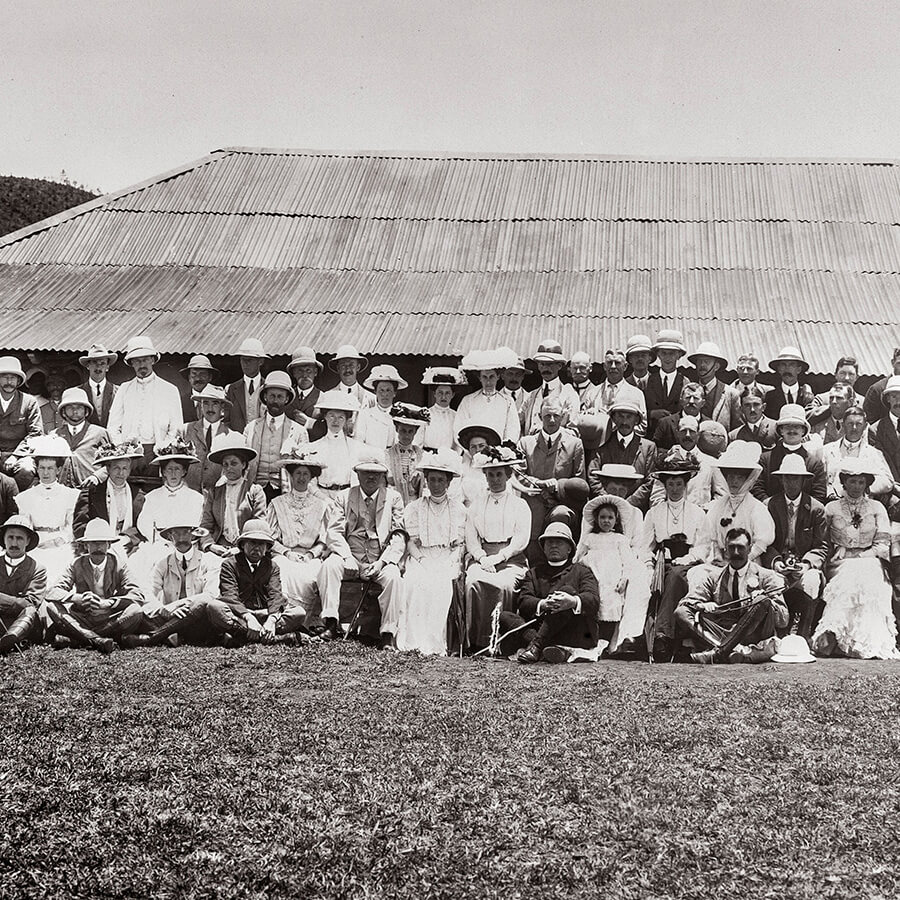There’s a long and fascinating history to the mountains that have come to be called the High Range. Their earliest foreign visitor was the Duke of Wellington himself, when he led a small force up to thwart Tipu Sultan’s expedition against the kingdom of Travancore, which was then under British protection. This was in 1790, when land was wild and treacherous, and remained so for years to come.
Nearly a century later, JD Munro’s passion for hunting sent him deep into the region. With him came AW Turner, a pioneer planter from Peermade. Their hunts made them experts in the region, so much so that they joined hands with AW’s brother HD Turner to purchase land in the hills from the local ruler, the Poonjar Raja, and begin the first plantation in the High Ranges
Many young men from England and Scotland followed, chasing their fortunes. Plantations of chinchona and coffee and tea sprung up all over the hills, and a Planter’s Society was formed. Plantation life was not easy, and the land was hard to tame, but they persevered for years, cheering themselves up with hunting and cricket to relieve the monotony.
Eventually, as the smaller planters neared bankruptcy, Sir John Muir of the James Finlays company swooped in, buying up 1600 acres of land and employing the planters to run its massive operations. What followed was a transformation of a sleepy hills to a prime tea cultivation region; there were roads, electricity, post offices, churches, club, which sprung up in the following years.
In the early 1970s TATA group joined hands with Finlay company in their efforts as a stake holder. Later with TATA taking over the remaining stakes of the company forms TATA Tea Ltd which continued to contribute to the development of the region . In the year 2005 TATA exits the tea plantation business in Munnar giving way to the Kannan Devan Hills Company Plantation Ltd. Munnar is now home to many plantation workers, agriculturist and allied service providers. Having been discovered and noted as a key tourist location, it attracts a lot of tourist who are mesmerised by its manicured tea gardens, and unique bio-diversity.
Many things have changed in the High Range, but the old-world culture remains in many parts – gracious, yet indomitable in the face of adversity. Visit the Club, or into any of the old places in Munnar, and experience it for yourself.
High Range Club
A beautiful old institution with charming traditions (Including one where anyone who spent 30 straight years in the High Range literally hung up his hat above the bar at the High Range Club. To date, there are 57 hats above the bar.),they are the older planter’s club in the region and is a member’s only club.They are open to affiliate members and has affiliation to most former Gymkhana clubs in India.

Munnar Supply Association
(MSA) was the only store for planters by planters, the store was set up in early 1900’s and is red bricked wall, with gabbled roofs. It had white painted walls and wooden cabinets with glass, much may have changed in the inside, however it remains still a prominent landmark and a store in the region.
Munnar Church of South India
The present day church was built in 1910, close to Munnar town on a hill. Constructed in Gothic styles, and with pretty stained glass windows. It has an old piano, and the brass plaques with names inscribed on them. Many a times travelers tracing family history may find a treasure trove in the church registered which dates back to its inception.
Tea factories & bungalows
Most tea factories date back a century and few of them now are open to guest visits such as Lockhart, Matupetty, Talayar. Also you are able to see old bungalows in the region and their gardens. Although most of them remain as privately held by the tea companies.
Kundaly Valley Light Railway
A landmark venture of the Tea plantation company was the setting up of a railway transportation system in 1908, and it was functional until the big floods in 1924. Now what remains is the Regional Headoffice of KDHP which once was the Munnar railway station, it also picked up fame with the BBC documentary on the Old railway Garden.